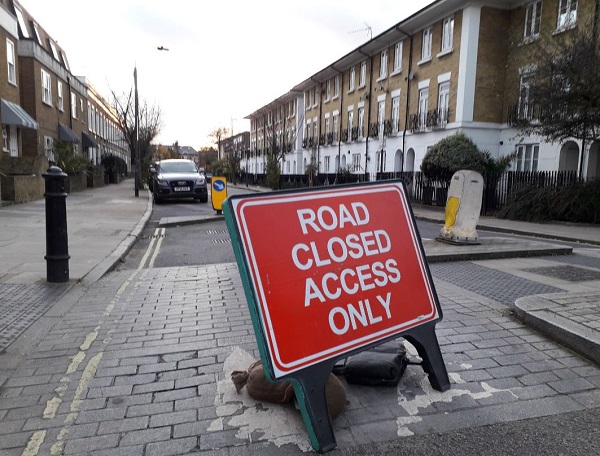Council Admit Failure to Consult Residents After Revising Harwood Terrace Plans
Number plate-recognition to be used to limit access for vehicles

Plans to manage traffic around Fulham using number plate-recognition cameras have been revised by Hammersmith and Fulham Council.
Under the scheme, which follows the controversial closure of Harwood Terrace, five “smart” cameras will be installed at junctions of residential streets to the east of Wandsworth Bridge Road.
The cameras will be located at:
- Harwood Terrace (westbound)
- Bagleys Lane near the junction of Imperial Road (northbound)
- Bagleys Lane near the junction of Imperial Road (southbound)
- Imperial Road (northbound)
- Imperial Road (southbound)
- Studdridge Street – to monitor traffic west of Wandsworth Bridge Road
These junctions will become “no-access” points for motorists who do not own Hammersmith and Fulham parking permits, and fines will be issued to non-residents who enter.
Delivery drivers, buses, emergency services and others will be registered as “permitted vehicles” to pass the no-access points.
According to the council, the changes will mean the following:
Motorists who are not from Hammersmith and Fulham will be no longer be able to use residential streets to the east of Wandsworth Bridge Road and then exit through Harwood Terrace or the Bagleys Lane junction
Non-residents will not be able to cut through the east of Wandsworth Bridge Road and use Stephendale Road, Hazlebury Road or Broughton Road to bypass queues and rejoin Wandsworth Bridge Road
The update was announced on April 8, and this month will see the end of a six-month trial that was introduced by the council.
Harwood Terrace closed in October, in response to appeals from the street’s residents about it being used as a rat run, by 400 vehicles per hour.
But the closure took many people in the SW6 area by surprise, and there were sustained complaints from residents who said they were not consulted, and that traffic and air pollution had increased in local roads.
The council has now said: “We realise we didn’t engage effectively with residents around the Harwood Terrace experiment. We’re sorry about that and we’ve learnt lessons. We’ve discussed the new scheme extensively with residents – and we’ll take the same approach when we implement it after the current crisis.”
It said this version of the plans had been designed in collaboration with a steering group of residents.
The council has also said it will not introduce the new system until coronavirus restrictions have been lifted.
“We are able to undertake only essential works at the moment, and we cannot source all the necessary equipment as our providers have suspended operations,” the council said in a statement.
Owen Sheppard, Local Democracy Reporter
April 9, 2020
Related links
|